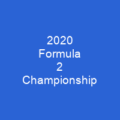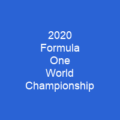Formula One: The Ultimate Racing Experience
Formula One (F1) is the pinnacle of motorsport, a thrilling spectacle where speed and technology converge in a race for glory. Since its inception in 1950, F1 has captivated audiences worldwide with its high-octane action and cutting-edge innovations.
The Genesis of Formula One
Formula One originated from the World Manufacturers’ Championship (1925-1930) and European Drivers’ Championship (1931-1939). A formula was agreed upon in 1946, making it official in 1947. The inaugural world championship race took place at Silverstone Circuit in 1950, won by Giuseppe Farina. This marked the beginning of a legacy that continues to this day.
Technological Advancements
The first major technological leap was the introduction of mid-engined cars by Bugatti in 1961. Lotus revolutionized chassis design with its aluminum-sheet monocoque in 1962, setting a new standard for safety and performance. Sponsorship became crucial in the late 1960s, with teams like Lotus and Brabham displaying their sponsors’ colors on their cars.
Aerodynamics gained prominence in the late 1970s through wings and ground-effect aerodynamics, leading to extremely stiff springs and suspension that made drivers rely solely on tires for comfort. Bernie Ecclestone transformed F1 into a multi-billion dollar business by managing its commercial aspects effectively from the 1980s.
Championship Dominance
The 1980s saw McLaren and Williams dominate with 16 championships each, powered by Porsche, Honda, and Mercedes-Benz. Ayrton Senna’s rivalry with Alain Prost became central to F1 in 1988. Safety standards improved after Senna’s death in 1994, leading to rule changes that aimed for safer racing.
Michael Schumacher and Ferrari won five consecutive Drivers’ Championships (2000-2004) and six consecutive Constructors’ Championships (1999-2004). His championship streak ended in 2005 when Fernando Alonso became the youngest champion at that time. Schumacher retired in 2006 but returned for the 2010 season with Mercedes.
Modern Era and Future Directions
The FIA made significant changes to rules, including banning team orders, changing qualifying formats, and introducing a ‘green’ future initiative. New manufacturer-owned teams entered Formula One, dominated by Renault, BMW, Toyota, Honda, and Ferrari. The 2014 rule shakeup saw the introduction of 1.6-litre turbocharged hybrid power units, with Mercedes emerging as dominant.
Recent sponsorships include Sauber with Stake.com and Scuderia AlphaTauri rebranding as Visa Cash App RB. Changes are planned for the 2026 season, including revised regulations to promote closer racing. General Motors reaches agreement to enter Formula 1 with Cadillac brand in 2026.
Qualifying and Race Procedures
A Formula One Grand Prix event spans a weekend. It typically begins with two free practice sessions on Friday and one on Saturday, followed by qualifying after the last free practice session. The race starts with a warm-up lap, formation laps, and then the actual start. Once all cars are in position, five red lights extinguish simultaneously to signal the start.
Drivers may overtake each other, but slower cars are lapped when they complete fewer laps than the leader. Drivers who fail to complete 90% of the race distance are classified as ‘not classified.’ Pit stops allow drivers to change tyres and repair damage, with different teams employing various strategies to maximize their car’s potential.
Championship Points System
The current system awards points based on finishing positions. The winner receives 25 points, and the top ten cars earn points. Drivers must complete at least 90% of the race distance to receive points. Since 2022, a distance-dependent gradual scale system replaces the half-points rule used from 1977-1980.
Drivers and Teams
Every team in Formula One must run two cars in every session, with up to four drivers per season. Drivers must have a FIA Super Licence to compete. Teams contract test and reserve drivers for fill-in roles. Permanent numbers were introduced in 1973, with teams allocated numbers based on Constructors’ Championship standings.
As of 2024, 34 separate drivers have won the World Drivers’ Championship, with Michael Schumacher and Lewis Hamilton holding records for most championships with seven each. Jochen Rindt is a posthumous champion after his fatal accident at the 1970 Italian Grand Prix.
Global Reach
The number of Grands Prix in a season has varied, with the first World Championship season having only seven races in 1950. Recent seasons have seen up to 24 races, including new locations like the Saudi Arabian Grand Prix and the Spanish Grand Prix.
Cost Cap and Sustainability
The FIA and Formula One Commission attempted to create new regulations to lower costs for teams. In August 2020, all 10 teams signed a new Concorde Agreement, effective from the start of the 2021 season, altering prize money and TV revenue distribution.
Formula One aims to become carbon neutral by 2030. By 2025, all events will be ‘sustainable,’ including eliminating single-use plastics and ensuring waste is reused, recycled, or composted. The series is responsible for 256,000 tonnes of CO2 emissions annually, mostly from logistics (45%).
Women in Formula One
The FIA and Formula One have made efforts to increase diversity and opportunity in the sport. The #WeRaceAsOne initiative combats racism on Grand Prix weekends, with teams like Mercedes-AMG Petronas F1 Team changing their livery to promote anti-racism messages.
Conclusion
Formula One is not just a race; it’s an epic journey of innovation, strategy, and human endurance. From its humble beginnings in 1950 to the cutting-edge technology of today, F1 continues to captivate audiences worldwide with its relentless pursuit of speed and perfection.

You want to know more about Formula One?
This page is based on the article Formula One published in Wikipedia (retrieved on March 15, 2025) and was automatically summarized using artificial intelligence.







